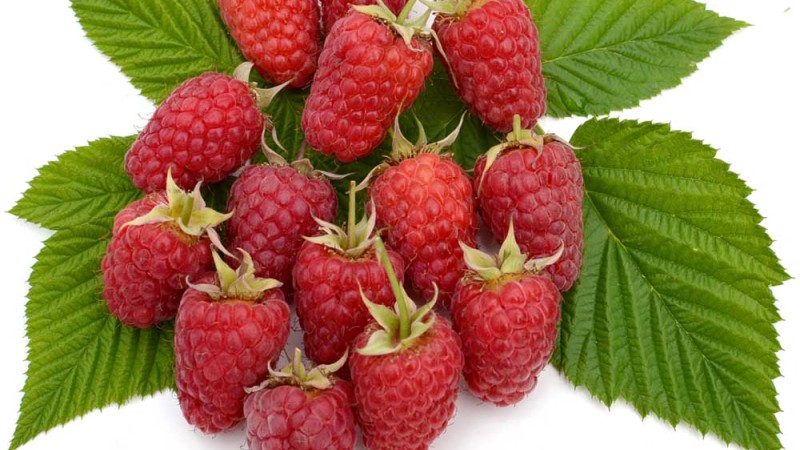
Maliny sú mimoriadne prispôsobivé rôznym klimatickým podmienkam. Darí sa im v nížinných aj horských oblastiach, majú však vyššie nároky na pôdu a stanovište.
Požiadavky na stanovište a pôdu
Slnečná poloha malinám vyhovuje najviac, ale darí sa im aj v polotieni, kde však menej plodia. Vyžadujú pôdy s dostatočným obsahom živín, humusu a pôdnej vlahy. V suchých pôdach slabo rastú a vytvárajú len malé plody. Naproti tomu v zamokrených pôdach často dochádza k odumieraniu výhonkov.
Koreňový systém malín je sústredený vo vrchnej časti pôdy
Maliny sú rastliny s plytkými koreňmi. Väčšina koreňov sa nachádza v hĺbke do 20 cm, preto je potrebné pred výsadbou pôdu zrýľovať do hĺbky aspoň 30 cm. Pred výsadbou odporúčame rozhodiť a zapracovať do pôdy granulovaný kravský hnoj alebo kompost a fosforečno-draselné hnojivo. Dusíkaté hnojivá potom stačí aplikovať počas vegetácie len na povrch, pretože sa vyplavujú. Maliny každoročne odčerpávajú z pôdy značné množstvo živín. Hnojte v predjarí kombinovanou dávkou organického a minerálneho hnojiva určeného na maliny. Hnojivá zapracujte do pôdy tak, aby nedošlo k poškodeniu plytko rozložených koreňov.
Výsadba malín
Maliny sa vysádzajú na vzdialenosť 40 až 60 cm v riadku, pričom jednotlivé rady rastlín sú od seba vzdialené približne 1,2 až 1,5 metra. Tento rozostup je dôležitý, aby boli rastliny dobre vetrané a dostávali dostatok svetla. Po výsadbe treba výhony skrátiť na dĺžku 25 – 30 cm, aby sa podporilo zakoreňovanie. Po výsadbe udržiavajte pôdu okolo rastlín bez buriny, vhodná je vrstva mulčovacej kôry, ktorá navyše zabráni odparovaniu vody. Sadenice predpestované v kvetináčoch je možné vysádzať počas celej vegetačnej sezóny, takže ak zmeškáte jarný termín výsadby, môžete kontajnerované maliny sadiť aj v lete. Životnosť dobre založeného porastu je 6 - 8 rokov.
Pre bohatú úrodu veľkých plodov maliny každoročne prerezávajte
Poznáme dva hlavné druhy malín - letné a remontantné.
Letné (raz plodiace) maliny prinášajú úrodu raz za sezónu na dvojročných výhonoch od júla do septembra.
Remontantné (dvakrát plodiace) maliny prinášajú úrodu dvakrát za sezónu. Prvýkrát na dvojročných výhonoch v júli a druhýkrát na jednoročných výhonoch od augusta do neskorej jesene. Po odplodení výhony odumierajú a ich produktívny život sa končí.
Ako prerezávať letné, raz plodiace maliny
Po zbere úrody pred zimou zrežte všetky odplodené výhony tesne pri zemi. Presvetlíte tým porast, nové výhony sa môžu optimálne rozvíjať a zabráni sa tým prípadnému rozšíreniu hubových chorôb. Zvyšné jednoročné výhony prerieďte. Chceme dosiahnuť, aby v poraste malín zostali len najsilnejšie a najvyššie zdravé výhony. Optimálne je ponechať asi 6 dobre vyvinutých výhonov na jednu rastlinu tak, aby mal každý výhon dostatok priestoru pre prístup svetla a dobré prúdenie vzduchu. Výhony pripevnite k opore.
Ako prerezávať remontantné, dvakrát plodiace maliny
Existujú dva spôsoby rezu. Najjednoduchší sa zameriava iba na jesennú úrodu na jednoročných výhonoch. Druhý spôsob zahŕňa letnú aj jesennú úrodu.
Rez len pre jesennú úrodu.
Po ukončení zberu plodov pred príchodom zimy všetky výhony zrežte tesne pri zemi.
Rez pre letnú a jesennú úrodu.
Jarný rez - v marci alebo apríli, keď už nehrozia silné mrazy, odstráňte všetky odumreté, slabé a tenké výhony, ktoré nebudú rodiť.
Jesenný rez - po ukončení zberu plodov na jeseň odstráňte všetky výhony, ktoré už rodili. Vyberte najsilnejšie jednoročné výhony a zrežte ich približne o tretinu. Tie prinesú v budúcom roku letnú úrodu. Zvyšné výhony zrežte tesne pri zemi.
Rezistentné odrody
Na trhu sú dostupné odrody malín, ktoré sú odolné voči mnohým vírusovým a hubovým chorobám. Pri kúpe malín by ste sa mali uistiť, že si vyberáte práve tieto odrody.










